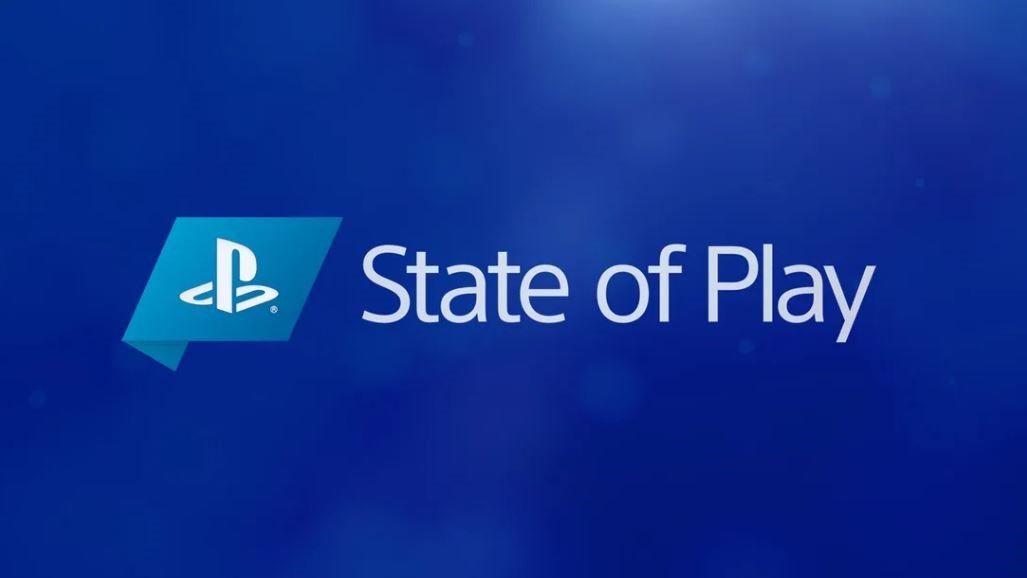It's only a little hyperbolic to say that the Sony FE 12-24mm F2.8 GM ($2,999.99) is a special lens, one that's simply unavailable for other camera systems. There are other full-frame zooms that cover as broad an angle, but none gather as much light as this F2.8 zoom. It's not just about the f-stop—the lens is good enough to use with the highest-resolution cameras, focuses quickly, and is made for all-weather shooting. It's a tool for the most demanding photographers, and worth every penny of its asking price, earning our Editors' Choice award. If you can't spend this much, think about the $1,699.99 Sony FE 12-24mm F4 G or the $1,199 Sigma 14-24mm F2.8 DG DN Art, both excellent optics in their own right.
Extremely Aspheric
Despite its ambitious design specifications, the FE 12-24mm F2.8 GM isn't at all unwieldy. It's a little big for a zoom at 5.4 by 3.8 inches (HW), and at 1.9 pounds a little heavier than most cameras with which you'll use it. It's only a little larger than the Sigma 14-24mm F2.8 DG DN Art (5.2 by 3.4 inches, 1.8 pounds), despite capturing a noticeably wider angle of view.

Both are lighter than ultra-wide zooms made for SLR systems. These types of lenses benefit from the short distance between lens mount and sensor afforded by mirrorless systems, which simplifies designs overall, and supports faster rear autofocus elements.
It's easy enough to notice when comparing with Canon's unique EF 11-24mm F4 zoom for its SLR system, which tips the scales at 2.6 pounds. Like other wide zooms for SLRs, the EF 11-24mm is a bit more front-heavy, too. The FE 12-24mm is better suited for use with video gimbals, devices that rely on a centered point of gravity to stabilize handheld footage, even if it doesn't net quite as wide an angle.
Similar Products

The 12-24mm F2.8 is the first full-frame lens to net such a wide angle of view and aperture. To get there, Sony uses three of its extreme aspheric (XA) lens elements. The largest is right up front and you can see just how curved it is. The bulbous front is protected by an integrated hood, and Sony includes a slip-on cap.
You can't add front filters without an accessory holder, but there's a slot in the rear for gel filters. A template for cutting your own is included, but third parties have come in with more professional solutions. Haida offers glass ND filters that slide into the rear slot, a worthwhile investment for long-exposure photography and video.
 Sony a7S III, 24mm, f/8, 1/200-second, ISO 100
Sony a7S III, 24mm, f/8, 1/200-second, ISO 100
Like Sony's camera line, the FE 12-24mm is made for outdoor shooting. It's protected from dust and splashes and is suitable for use in inclement weather. The front element has the expected anti-reflective Nano AR protection and includes anti-smudge fluorine. It's a useful feature, as this lens is more prone to stray fingerprints, and fluorine makes it easy to wipe them away with a microfiber cloth.
The basic controls are included. The zoom and focus rings are rubberized, so you can find them by touch—they feel different than the polycarbonate barrel and are covered with ridges. You also get an on-lens function button and AF/MF toggle switch. There's no aperture ring, though, a feature that Sony includes on most GM series prime lenses, but not zooms.

The zoom ring turns comfortably, but you do need to apply a bit of torque to move the front element back and forth. The focus ring turns more easily, but there's some pleasing resistance. Response is linear, a plus for videographers who want to make consistent focus racks from take to take.
The angle of view does change a little bit when moving from close-up to distant focus. The breathing effect isn't ideal for video, but is really only worth thinking about if you're considering a shot that changes the plane of focus dramatically.
 Sony a7S III, 12mm, f/2.8, 1/1,250-second, ISO 100
Sony a7S III, 12mm, f/2.8, 1/1,250-second, ISO 100
Focus is available to 11 inches, measured from the camera sensor. This means you can put the lens just a few inches away from a subject and get a shot. It's a technique you can use to capture smaller subjects with a vast background behind them, a very different look than the short telephoto lenses we usually think of as macro.
Optical stabilization is neither included nor expected. Instead the 12-24mm relies on your camera's 5-axis IBIS system to steady handheld video and net long handheld exposures.
In the Lab
I paired the FE 12-24mm F2.8 GM with two Sony cameras for testing. Most of my use in the real world was with the a7S III, and lab-based resolution testing was performed with the 60MP a7R IV and Imatest software. Sony's G Master lenses promise to deliver the best performance on high-resolution sensors, and the a7R IV is the currently the most pixel-dense full-frame camera available.

At 12mm f/2.8, the pair delivers resolution considered very good for the a7R IV, a feat for wide-angle lenses that, as a rule of thumb, don't score as well in the lab as standard and telephoto lenses. The field of focus is curved, not flat, so expect blurred edges if you're photographing perfectly flat objects up close.
See How We Test Cameras and Lenses
In real-world shots you may notice some softening toward the edges and blurred corners for interiors, night skies, and handheld landscape shots. Narrowing the f-stop improves resolution all around; at f/4, the lens delivers resolution considered outstanding at 12mm. Corners and the very edges of the frame are a little softer, but acceptable.
 Sony a7S III, 12mm, f/11, 1/160-second, ISO 100
Sony a7S III, 12mm, f/11, 1/160-second, ISO 100
For landscape use, the lens shines at f/5.6 and f/8—resolution is as good as you'll find in a wide lens, and the corners are just shy of tack sharp. The effects of diffraction creep in starting around f/11, but you can still get good results with the lens there and at f/16, even on a high-resolution body. We recommend against using f/22—results are softer than you get at f/2.8, and the lens draws great looking sunstars at wider apertures.
The story is very much the same at 18mm and 24mm. At f/2.8 you'll net photos with excellent detail, nearly right up to the edges, but still not as sharp as at the center. Everything is a little bit crisper at f/4, and you'll enjoy the corner-to-corner clarity you want for landscapes.
 Sony a7S III, 12mm, f/10, 1/50-second, ISO 100
Sony a7S III, 12mm, f/10, 1/50-second, ISO 100
There is some distortion. In-camera corrections remove the visible barrel distortion from shots captured at the wide end, and the pincushion effect from photos closer to 24mm. You'll need to take advantage of a lens-correction profile to remove them from Raw shots; Adobe Lightroom has one for the lens that does a great job straightening lines. I wouldn't hesitate to use it for architecture, but as with any wide lens, take care to keep it plum and parallel to your subject. Objects near the corner will appear stretched if you catch them off-angle, like the park benches in the photo above.
In-camera corrections remove the natural vignette, visible in Raw images. Despite the angle and aperture, uncorrected images are a little bit dark at the corners and edges, but nearly to the extent of some other wide f/2.8 zooms.
 Sony a7S III, 12mm, f/16, 1/30-second, ISO 160
Sony a7S III, 12mm, f/16, 1/30-second, ISO 160
This is an especially appealing lens for landscape photographers who love the sunstar effect. It nets clearly defined stars by f/8, and they continue all the way down through f/22. Many wide zooms will draw bright points of light in a similar way, but the stars aren't quite as crisp until you get to f/16 or f/22.
Flare and ghosting resistance is fantastic, too. I had a hard time getting any sort of reflections to show up in photos, even when framing the sun in the corner at 12mm.
The Best Wide Zoom We've Tested
You won't find another lens quite like the Sony FE 12-24mm F2.8 GM. You can find other 12mm (and wider) zooms, and other ultra-wides that match its aperture, but nothing else puts it together in one lens.
 Sony a7S III, 12mm, f/8, 1/30-second, ISO 125
Sony a7S III, 12mm, f/8, 1/30-second, ISO 125
That feat alone would be noteworthy, but the lens delivers the results you need to pair with the highest-resolution sensors available today, and is sized sensibly enough to use with gimbals and for handheld photography. It's built to high standards as well, with dust and splash protection and anti-smudge protection on the front glass.
At around $3,000, the FE 12-24mm F2.8 GM costs as much as you'll spend for any Sony lens, save for a pair of exotic super-telephoto primes. It's not Leica territory, but it's a little salty. Photographers looking to save some money and get as wide an angle can look to the FE 12-24mm F4 G, priced around $1,800.

If you want to spend a lot less, the Sigma 14-24mm F2.8 DG DN Art doesn't net as wide an angle, but is an excellent performer and a value option at $1,200. There's also the manual focus Venus Laowa 10-18mm F4.5-5.6 for around $850—it's not nearly as high-end an optic, but its extreme angle of view is head-turning. There's also the forthcoming FE 14mm F1.8 for $1,600—it's not a zoom, but the brighter aperture is appealing for astrophotography.
Other lenses will get the job done, but photographers looking to get the best wide-angle images (and video) with a full-frame Sony camera should make room in their budget if possible. The FE 12-24mm F2.8 GM is the best wide zoom we've tested for any system, and our Editors' Choice winner.
Sony FE 12-24mm F2.8 GM
Editors' Choice
Pros
View MoreCons
View MoreThe Bottom Line
Sony's FE 12-24mm F2.8 GM lens capture wide views with stunning detail, even on high-resolution cameras. It's a rewarding tool for photographers that can afford its high price.
Get Our Best Stories!
Sign up for What's New Now to get our top stories delivered to your inbox every morning
This newsletter may contain advertising, deals, or affiliate links. Subscribing to a newsletter indicates your consent to our Terms of Use and Privacy Policy. You may unsubscribe from the newsletters at any time.
April 30, 2021 at 10:04PM
https://ift.tt/2QDBHwm
Sony FE 12-24mm F2.8 GM Review - PCMag
https://ift.tt/2ZeUDD8
Sony






 The a7S III includes a front-facing display for vlogging
The a7S III includes a front-facing display for vlogging
 Sony FE 12-24mm F2.8 GM, 12mm, f/16, 1/30-second, ISO 160
Sony FE 12-24mm F2.8 GM, 12mm, f/16, 1/30-second, ISO 160




 Sony FE 12-24mm F2.8 GM, 12mm, f/10, 1/50-second, ISO 100
Sony FE 12-24mm F2.8 GM, 12mm, f/10, 1/50-second, ISO 100
 You can use CFexpress Type A or SDXC media in either card slot—here the top slot has a CFe card installed and the bottom has an SDXC card loaded
You can use CFexpress Type A or SDXC media in either card slot—here the top slot has a CFe card installed and the bottom has an SDXC card loaded
 Sony FE 12-24mm F2.8 GM, 12mm, f/11, 1/160-second, ISO 100
Sony FE 12-24mm F2.8 GM, 12mm, f/11, 1/160-second, ISO 100
 Canon EF 400mm F4 DO IS II USM, f/5.6, 1/500-second, ISO 1000
Canon EF 400mm F4 DO IS II USM, f/5.6, 1/500-second, ISO 1000
 Canon EF 400mm F4 DO IS II USM, f/4, 1/500-second, ISO 320
Canon EF 400mm F4 DO IS II USM, f/4, 1/500-second, ISO 320
 Meyer Optik Gorlitz Primoplan 75 F1.9 II, f/1.9, 1/3,200-second, ISO 100
Meyer Optik Gorlitz Primoplan 75 F1.9 II, f/1.9, 1/3,200-second, ISO 100
 Sony FE 50mm F1.2 GM, f/1.4, 1/160-second, ISO 100
Sony FE 50mm F1.2 GM, f/1.4, 1/160-second, ISO 100
 Sony FE 12-24mm F2.8 GM, 12mm, f/2.8, 1/1,250-second, ISO 100
Sony FE 12-24mm F2.8 GM, 12mm, f/2.8, 1/1,250-second, ISO 100
 Sony FE 12-24mm F2.8 GM, 12mm, f/11, 1/200-second, ISO 100 (S-Cinetone Picture Profile)
Sony FE 12-24mm F2.8 GM, 12mm, f/11, 1/200-second, ISO 100 (S-Cinetone Picture Profile)
 Canon EF 400mm F4 DO IS II USM, f/4, 1/500-second, ISO 800
Canon EF 400mm F4 DO IS II USM, f/4, 1/500-second, ISO 800
 Sony FE 12-24mm F2.8 GM, 12mm, f/8, 1/30-second, ISO 125
Sony FE 12-24mm F2.8 GM, 12mm, f/8, 1/30-second, ISO 125







